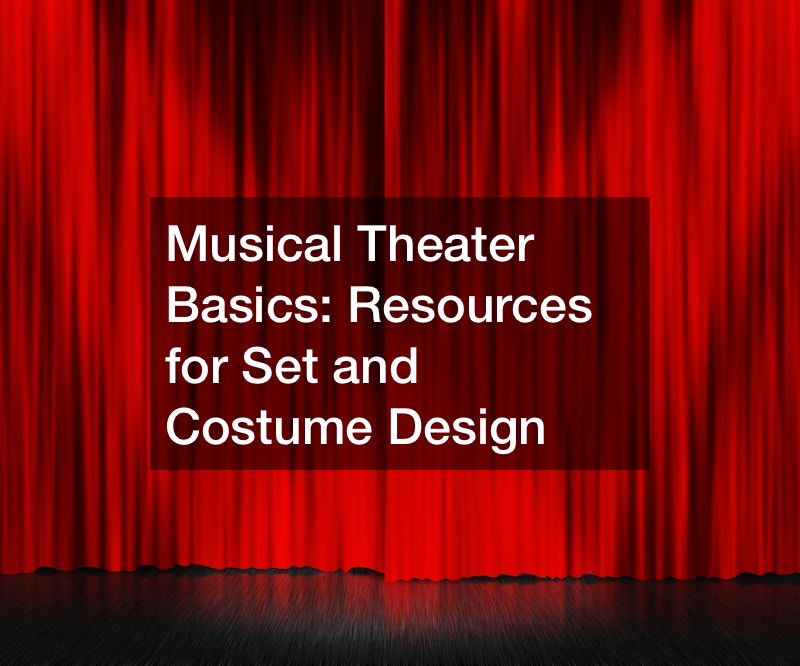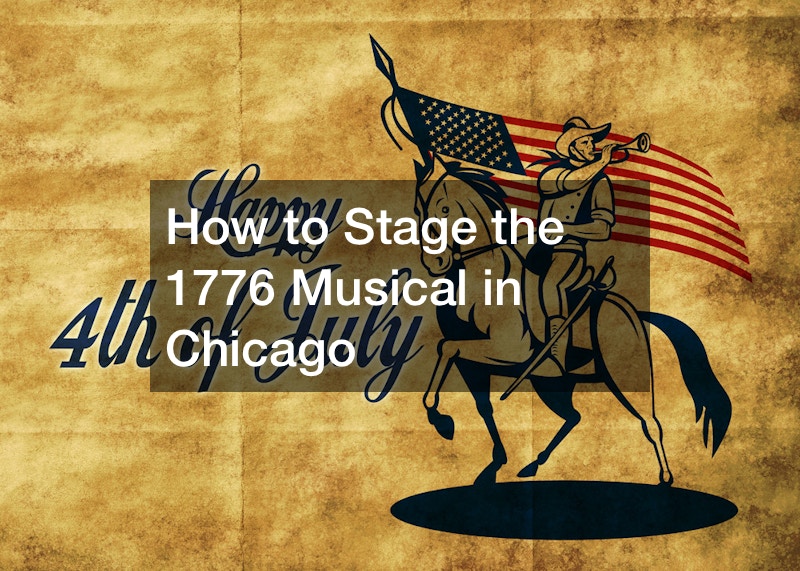
The hypnotic power of music’s abstract sound may subdue even the most unyielding spirit. A theater provides an outlet for many forms of entertainment but also tells the story of a culture’s heritage. Set and costume design has significantly contributed to cultural venues. It also heightens the audiences’ senses and over-focuses the intangible sensation that music gives. This article looks at some of the resources for set and costume design.
Costume design focuses on illustrating and expressing characters using fashion. It requires a thorough knowledge of stage production, fashion, and costuming history and an eye for creating distinctive visual designs. Every wardrobe element and accessory brings the characters and locations to life.
Audience
Among the many necessary resources for set and custom design is an audience. A performance that’s not presented to an audience is only a rehearsal. The interaction between performers and viewers at a live performance is sometimes referred to as the actor-audience connection. The precise nature of this connection might change depending on the performance modality. It is common for actors in theater shows to break the fourth fence and connect directly with parts of the audience. In contrast, actors in purely naturalistic perfomances may ignore the audience entirely. It may be both a fascinating intellectual challenge and a lot of fun to experiment with changing the performer’s interactions with the audience.
Language or Text
Text is among the critical resources for set and costume design. In performances, language can be used vocally, verbally, or non-verbally. Communication typically takes the form of a written or written-and-spoken language. It’s a live interpretation of the written text. The language might be recited or sung instead of a performance. The nonsensical language might be used for comedic and dramatic effects.
Because language is central to the plot, it is one of the essential parts of the theater. A performer’s command of language and ability to convey emotion through that control determine how they use it. Non-verbal, such as body language, are two separate elements. Speaking is the act of making vocal sounds to communicate.

Sound and Music
Sound and music are essential resources for set and costume design in many aspects of today’s theatrical productions. Lighting has always been employed in a theater to create an ambiance for performance. However, sound and music are increasingly being adjusted to achieve the same effect. The use of sound might require applying many technological components, such as soundscapes and sound effects. Actors using their bodies in performance settings may also effectively generate sound. Simple props can cause sound effects that may be used in live performances. It’s possible for there to be no sound at all in a dramatic performance.
Space
One of the essential resources for set and costume design is space. This refers to efficiently using the area at hand during production. Horizontal and vertical dimensions coexist in space. Performers may take any position on stage, including upstage, downstage, stage left, or stage right. It’s also possible to use other levels of space, such as sitting, stooping, laying down, crawling, or physically using another level of a stage set. Movement becomes an essential component of efficiently using available space.
It’s also necessary to communicate effectively to the audience where the action will take place to use space effectively. This could encompass variations in a location during the performance, especially if there are few or no sets or props used and a high dependency on the audience’s imagination, also referred to as an implied space in the theater. In this case, any location changes that occur during the performance may fall under this category. Sometimes theater structures or certain shows may be constructed by utilizing a particular area, such as proscenium, traversing, arch, and thrust staging.
Spectacle
Many years ago, the spectacle was regarded by famous philosophers like Aristotle as among the essential resources for set and costume design. According to the philosopher, elements of a spectacle include actor gestures, scenery, costumes, and the visual effects produced by the resonance of the performer’s voice.
However, in today’s terms, spectacle refers to all visual aspects of a performance, including a theater’s production and stagecraft areas. This category includes stage sets, props, make-up, multimedia, and special effects. Besides, because of the new technology, a spectacle in the modern theater will probably be given greater weight than it was many years ago.

Symbol
One of the essential resources for set and costume design is the use of symbols. The application of symbols in stunning roles has the potential to be both one of the most straightforward and one of the most challenging of all techniques. Symbolism suggests a greater significance than is conveyed by its literal equivalent. Because of their symbolic meaning, props make for the least challenging production element to work with, for example, where a rose symbolizes love. Color can also convey meaning through the use of symbols. It is common practice to associate the color red with danger, black with evil, and purple with royalty.
Lighting
The manipulation of the surrounding lighting is among the essential resources for set and costume design for creating an exciting performance and improving the overall experience for the audience. The lights are categorized according to usage before and after the show, during the performance with the musical performance for special effects, and while the theater electrical lighting services carry out maintenance on the auditorium.
The audience is led securely to their seats without the risk of accidents by employing indirect illumination on the stairs and aisles. This causes the least amount of disruption to the crowd that is already there. Everyone in the theater should see the emergency lights leading to the fire escape if a situation requires them to evacuate the building.
In theater, lighting designers work closely with the directors to identify what kind of lighting effects would achieve the intended effect on stage. Lighting design encompasses a wide range of tasks, from establishing the desired atmosphere to directing the focus of the audience and producing the desired results.
Accessibility
The planning of an inclusive design is required for a public building. It’s possible the entrances for those with varying degrees of physical ability won’t be kept distinct from those of the public. This can be achieved with the help of custom construction companies and a general contractor. The planning should operate like a well-oiled machine for all customers, causing no inconvenience. Physically disabled people are more likely to feel like they are a part of the action if the entry does not have any steps and there is a specific section reserved for wheelchairs in the premium seating area. It is essential that the complex and all the accompanying theater spaces, such as the lobby and gazebos, be free of any physical obstruction.

Costume Designer
By giving each actor or singer a distinct appearance, a costume designer contributes to the overall narrative of a theater performance. They handle the creation of costumes, as well as apparel, accessories, and footwear for the actor to wear. In most cases, costume designers have good sketching or painting ability to assist the rest of the creative team in visualizing what the outfits will look like when they are finished.
Additionally, they must gain the skills to sew, explore different historical periods, understand color theory, and work with various materials. Others gain this knowledge in the design field via formal education, either at the undergraduate or graduate level. Some costume designers sew the costumes themselves. In contrast, others, particularly those working in bigger theaters, often depend on other designers, such as custom jewelry designers, to bring their ideas to life. Costume designers are often contracted as independent contractors per show and typically work at several theaters.
Interior Designer
Interior designers are essential resources for set and costume design. They assist in the play’s creation or the theater’s visual environment. The interior designer determines the overall appearance of the stage, including massive or abstract scenic pieces, furniture, sign design, and flower arrangements, in collaboration with other designers and the director. They often communicate their concepts using computer drafting tools or hand drawings from sign shops. The majority can create scale models of the sets they design and have a fundamental understanding of welding and carpentry. Most people who work as interior designers are employed as independent contractors on an interior design sourcing basis.
Time
Time is one of the critical resources for set and costume design in most performances. In the historical play, time may show a single era like the 1880s. Other performances express a present or contemporary picture of time. Some plays feature a precise time that must be shown to the audience. These may include seasonally, monthly, daily, or even hourly. More general usage of time entails the mention of the future.
Time may also relate to how long the play takes to perform. This may be particularly relevant in realistic perfomances because the amount of stage time in a play may approximate real-time in the theatre. Flashbacks, flashforwards, and other disconnected time sequences in a theater performance may also point to shifts in time. Alternatively, plays might purposely look ageless inside the universe of the play.

Theme
What occurs on stage in theater is called the plot. In contrast, the performance’s theme describes the story’s overarching ideas and themes. The performance’s deeper significance emerges during its dramatic action. Different themes might exist within the same set. Identifying a performance’s central message requires stepping back and taking in work. Is the performance truly about racism if it’s about a bunch of friends from diverse cultures? Examples of themes in a theater performance include power, vengeance, love, good vs. evil, or injustice.
Structure
The framework of a performance is its structure or theatrical structure. A typical structure comprises an opening act with exposition and initial action, a conflict-revealing inciting incident, a rising act with the rising dispute and one or more disasters, a peak moment of conflict and crisis known as the climax, and a falling act leading to a conclusion that isn’t necessarily a happy one. The conclusion of a performance is typically described using the French term denouement.
Some absurdist works have unusual structures, such as narratives that circle back to where they started. There is structure because all of Shakespeare’s and his contemporaries’ performances are structured as five acts. Later, the three-act structure became more frequent, eventually two act. These days, it’s uncommon for a performance to be only one act long and composed of several shorter acts.
Role and Character
Theater performance relies on the interplay between actors and their characters. Without either, there would be no story to tell. Sometimes the terms role and character are used separately, but they need to be used interchangeably. Playing a part in a musical theater performance is frequently more of a means than an end. However, you can also politely inquire about the actor’s role in the production.
A character in a game of dramatic improvisation requires the performer to switch roles rapidly and with little thought or planning, often in response to a prompt. Although taking on a role is essential to grasping performance’s central tenets, portraying a character is generally regarded as the more difficult task. Throughout a performance, it’s not uncommon for the characters to develop and undergo complex changes. Expressive acting chops are required for convincing character portrayal. Professional theater uses many techniques for creating and maintaining a character.
Voice
The human voice is one of the most important resources for any theater performance’s set and costume design. The term ‘movement piece’ or ‘mime’ describes a dramatic performance in which no words are spoken. The voice may be considered part of a singer’s expressive abilities, but it’s crucial to any dramatic performance. The singers’ richness of voice is depicted by projection, tone, pitch, articulation, silence, or tempo.
Musical theater has many resources for set and costume design. All these resources combine to produce exemplary theater production. However, new resources are bound to enhance theater performance with emerging technology in musical theater.



